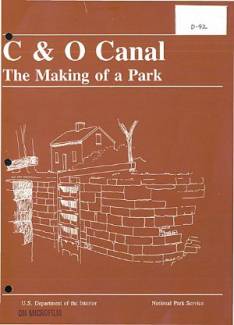Collection Name
About
Chapter 6
EXPANDING THE PARK
The 1971 act finally gave the National Park Service the authority and means —with subsequent appropriations — to enlarge its narrow canal right-of-way into a viable park. Land acquisition was the primary purpose of the legislation and became the first priority following its enactment.
The act did not inaugurate Park Service real estate dealings along the canal, however. There had been some previous additions in the three decades since the railroad had conveyed the canal. There had also been moves to alienate some of what the Service had then acquired.
Cumberland, it will be recalled, had tried to obtain the canal property within the city limits in 1941 (page 53). Once the Service became committed to the parkway concept, it was willing to relinquish portions of this property in exchange for other lands fulfilling its needs.
In September 1953, at the request of Sen. J. Glenn Beall, Associate Superintendent Harry T. Thompson of National Capital Parks met in Cumberland with representatives of its chamber of commerce, the Maryland State Roads Commission, and Pittsburgh Plate Glass. PPG was planning a plant in the Mexico Farms area and wanted part of the canal property for a railroad siding. "The essence of the conference was to the effect that the National Park Service would cooperate fully with the Cumberland Chamber of Commerce and with the industrial firm since the canal proper between Lock 75 for a distance of approximately 1-1/2 miles upstream ... was scheduled for abandonment as a canal, and that we would encourage the Chamber of Commerce to proceed on the assumption that all of the land between the Western Maryland Railroad and the river might be made available to the industrial plant and that the National Park Service would endeavor to locate the parkway eastward of the B & O Railroad tracks," Thompson reported...
